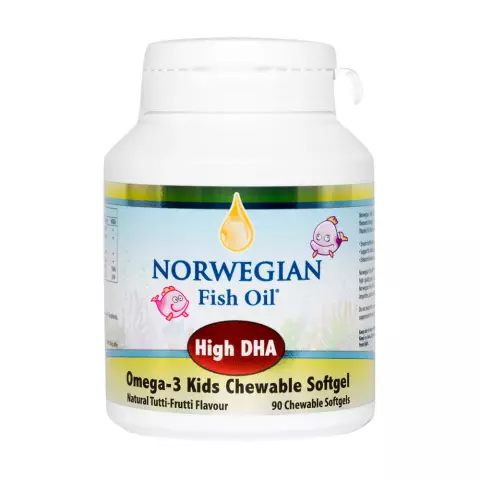- Author Rachel Wainwright [email protected].
- Public 2023-12-15 07:39.
- Last modified 2025-11-02 20:14.
Prebiotics: what they are and how they help to cope with dysbiosis
Correct, balanced nutrition is the key to longevity and excellent health. The prevention of many diseases consists, first of all, in a thorough revision of the daily menu, the selection of the most suitable diet. The beneficial properties of products directly depend on what substances and trace elements are included in their composition, how they are absorbed, what they affect and how much our body needs. Among the myriad of vital components, prebiotics occupy a special place. Recently, for advertising purposes, many manufacturers widely use this name, without bothering themselves with detailed explanations of the benefits of prebiotics for our body. And the benefits from them are enormous.

What are prebiotics
Prebiotics is a functional complex of food ingredients that are low-molecular-weight carbohydrates based on beta-glycosidic bonds. When taken orally, they freely pass the upper parts of the gastrointestinal tract, "settling" in the large intestine. Here they are fermented. Due to its unique composition, prebiotics can selectively stimulate beneficial bacteria in the intestinal microflora. Lactobacilli and bifidobacteria located in the lower part of the intestine, depending on the general condition of the body, can exhibit different activity. A healthy intestinal microflora suppressed by pathogenic microflora can cause a noticeable decrease in general immunity, the development of dysbiosis and other diseases. In this state, any bacterial or viral infection easily "breaks through" the natural defense. A person gets sick quicklythe disease proceeds with complications, requiring long and expensive treatment. Thus, prebiotics can be safely called the "first link" of the human immune system.
Prebiotics are responsible for the correct and constant growth of the normal microflora of the large intestine. A large number of them are found in food, such as dairy and fermented milk products, corn, cereals, bread, onions and garlic, beans, peas, artichokes, asparagus, and bananas. In addition, the modern food industry has learned to produce products with a high content of prebiotics, enriching cereals, confectionery, and dairy products with them. The content of nutrients is usually indicated on the packaging. In addition, prebiotics contain some drugs that must be used as a prophylactic agent for digestive disorders and a decrease in immunity.
Properties of prebiotics
As already noted, the main property of prebiotics is their selectivity. Substances are "oriented" in place. By stimulating only those bacteria that need it. In the large intestine of a healthy person, many bacteria are responsible for the normal process of breaking down and absorbing all the necessary substances. Among them are bifidobacteria and lactobacilli. It is with them that prebiotics for the intestines work, the list of which is quite impressive. The list of substances that have a prebiotic effect contains a fairly large number of components:
- oligosaccharides of various origins;
- monosaccharides such as xylitol and raffinose;
- disaccharides and polysaccharides;
- soy and dairy peptides.
As well as many enzymes, amino acids, antioxidants, fatty and organic acids, plant and microbial extracts, and much more. Most of all of the above substances are somehow correlated with plant foods. Due to the lack of formation of sugars during the utilization of prebiotics in the large intestine, foods containing them, as well as preparations enriched with prebiotics, are completely safe for diabetics of any type.
Interaction of prebiotics with probiotics
We already have an initial understanding of what prebiotics are and why our bodies need them. But what are probiotics? First of all, these are the very beneficial bacteria, the stimulation of which is the goal of prebiotics. That is, if a prebiotic is a remedy, then a probiotic is an object of influence. Both, interacting, create a favorable environment in the colon, affect the level of immunity, actively fight the manifestations of dysbiosis and help improve digestion, and therefore the body's receipt of all vital substances. Probiotics and prebiotics, the best combinations of which are contained in preparations and quality dietary supplements, are the prevention and treatment of many diseases. Elimination of the root cause of ailment by restoring the body's natural forces.
The exact formulation of the definition of individual biological substances, their mutual influence on each other have long been the subject of fierce controversy in scientific circles. But in 2002, scientists managed to find a compromise. According to the version that was completely arranged by the World Health Organization, a probiotic is a colony of microorganisms that are not pathogenic for humans. These tiny bacteria can easily restore normal microflora, having a detrimental effect on pathogenic and opportunistic bacteria.
Probiotics are no less diverse than prebiotics, the list includes more than a dozen options. Here are just the main microorganisms that can be classified as probiotics:
- lactobacilli and bifidobacteria;
- non-pathogenic varieties of Escherichia Coli;
- non-pathogenic bacilli;
- Enterococcus bacteria. Non-pathogenic species;
- lactic acid streptococci;
- yeast fungi of the Saccharomyces boulardii species that provide fermentation of dairy products.
Having determined the variety of probiotics and their effect on the body, scientists began to actively create drugs that included one or more of the above components. The combination of these microorganisms determines the therapeutic activity and scope of the drugs.
The difference between probiotics in food and in pharmaceuticals lies in the ratio and concentration. If in the first case it is practically impossible to regulate the volume of the obtained substances (in different types of cheese, for example, there are different numbers of beneficial microorganisms), then in the preparations their volume is clearly defined, and in addition to probiotics, the composition may also contain vitamins and probiotics in an optimal dosage.
Bifistim: a storehouse of nutrients
We talked about which prebiotics, drugs, and a list of possible options can be useful for diseases that weaken the immune system. It's time to move on to practice and take a closer look at one of the most popular dietary supplements. It is based on the optimal combination of probiotics, prebiotics and vitamins - this is Bifistim. Each tablet contains oligofructose; inulin; calcium hydrogen phosphate, as well as a whole range of vitamins, acids and bacterial cultures. For ease of use, the dietary supplement was created in the form of chewable tablets that can be taken anywhere without the need to drink water.

This is not a pharmaceutical drug, but a dietary supplement with a concentrated content of probiotic microorganisms, prebiotics and vitamins, which additionally contains inulin.
The total content of physiologically active live microbial probiotic bifidobacteria and lactobacilli in one dose is 5x109 CFU. This is enough not only to support the body during the period of taking antibiotics of complex action or recovery from infectious diseases, but also in order to completely restore the intestinal microflora and eliminate dysbiosis, which often becomes the cause of secondary infection of the urinary tract and even the development of oncological diseases. Live bacteria eliminate any pathogenic, opportunistic and putrefactive flora, protecting the body from the development of infections.
The remedy can help in the fight against flatulence, since it is caused by the processes of decay, decomposition and fermentation in the intestines. Additionally, dietary supplements can have a positive effect on the body, helping it to fight toxic effects and reduce the risk of allergies. Against the background of improved immunity, metabolism is gradually restored, the production of immunoglobulins, B and T lymphocytes and macrophages is normalized.
Taking the synbiotic Bifistim is an excellent addition to the dietary program. It can help:
- restore the intestinal microflora;
- stabilize the microflora against the background of insufficient or poor micronutrient nutrition (for example, in the postoperative period);
- to remove the consequences of maladjustment during climate change, food habits, stress against the background of physical and emotional fatigue;
- provide an adequate supply of probiotics, dietary fiber and vitamins;
- gently normalize bowel function during pregnancy or menstruation in women;
- improve digestion in old age, increasing metabolism and making up for the lack of enzymes.
Direct contraindications to the use of the product can only be allergic reactions to its individual components. However, despite the safety of using the dietary supplement, before using it, you should definitely consult with your doctor.
Found a mistake in the text? Select it and press Ctrl + Enter.






